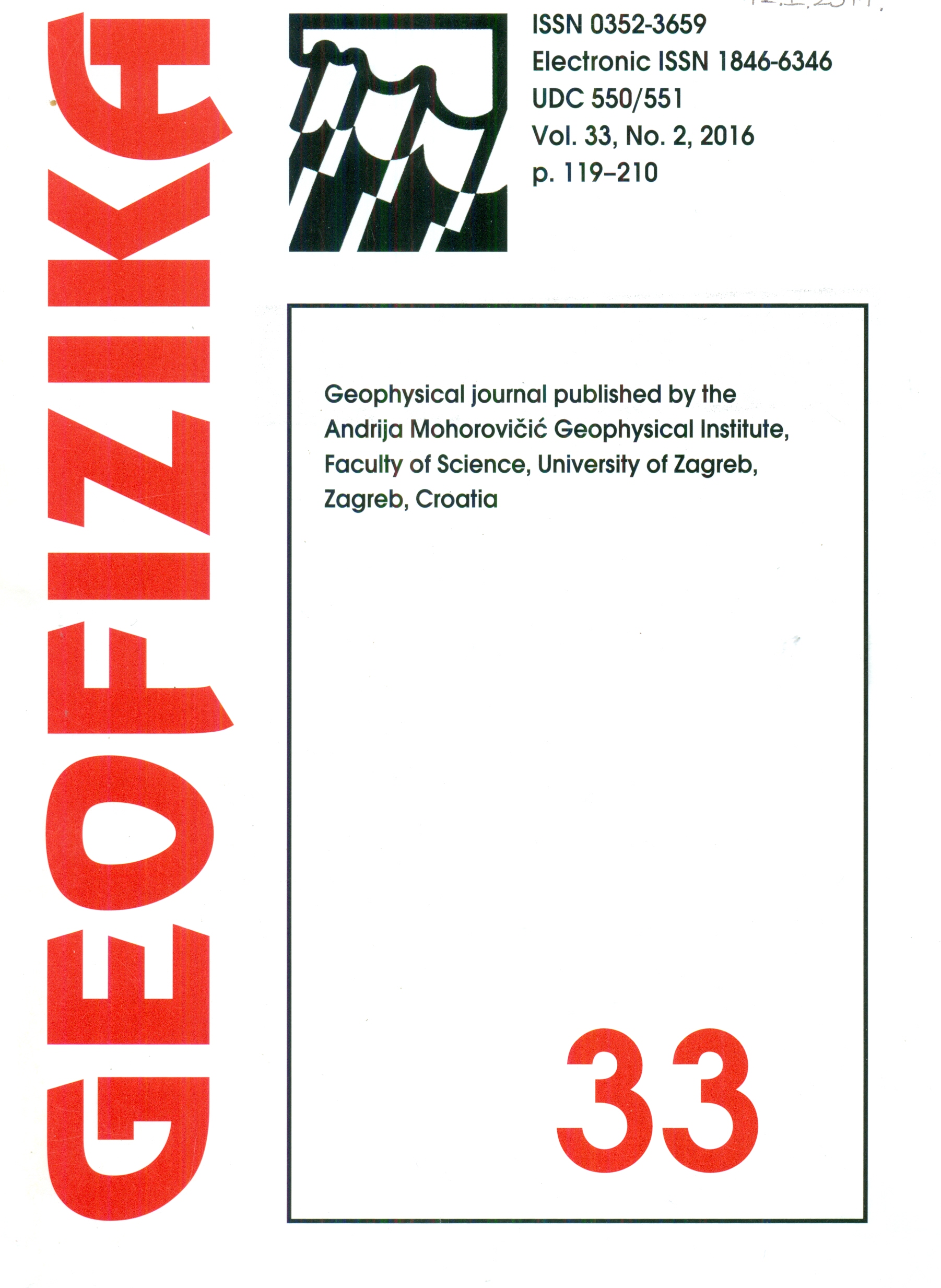Analyses of urban and rural particulate matter mass concentrations in Croatia in the period 2006-2014
DOI:
https://doi.org/10.15233/gfz.2016.33.8Keywords:
urban and rural air quality, spatial distribution of PM mass concentration, PM2.5 / PM10 ratio, source identification, CroatiaAbstract
Air pollution due to particulate matter with an aerodynamic diameter ≤ 10 µm (PM10) and diameter ≤ 2.5 µm (PM2.5) was investigated using available measurements in Croatia. Hourly and daily PM10 and PM2.5 mass concentrations were analysed for urban and rural background stations. Urban and industrial PM10 measurements from 2006 to 2014 and rural background PM10 and PM2.5 measurements from 2011 to 2014 were used to determine the main characteristics of regional and local air pollution related to particles and to assess the level of air pollution according to the defined limit values (CAFÉ Directive 2008/50/EC). Significant difference between coastal and continental urban and rural PM10 levels was found with high PM10 concentrations in continental areas and considerably lower PM10 values at the coast. Substantially different spatial distribution of rural background PM concentrations with relatively high annual average concentration ~ 30 µg/m3 at e.g. continental station Kopački rit, to only ~ 5 µg/m3 at Hum located on the island of Vis was found. Strong spatial PM gradients from the continent towards the coast are resulting from the distinct differences in climatological characteristics between Croatia's inlands and the coastline and different physical processes affecting the PM concentrations in the two regions (e.g. sea breeze, deposition, wet removal, resuspension). Furthermore, distinct complex chemical mechanisms that depend on emission rate and PM composition and on meteorological parameters (sun radiation, humidity etc.) have different influence on the formation of secondary organic aerosol in marine and continental boundary layer. Ratio between rural PM2.5 and PM10 mass concentrations (PM2.5 / PM10) for all sites was investigated and compared to the results obtained in other European studies. Rural site-specific PM2.5 / PM10 ratios ranged from 0.6 to 0.9 during the warmer part of the year while during the colder part of the year ratios were higher and ranged from 0.85 to 0.98. The spatial gradient of rural PM2.5 / PM10 values is orientated from the coast to the continent implying that at the coast the PM concentrations are mainly composed of fine particles. Observed hourly temperature, relative humidity and wind values in the period from 2006 to 2014 are analysed together with the corresponding PM concentrations and an initial source identification was conducted based on bivariate polar plots.
Downloads
Published
Issue
Section
License
Copyright (c) 2021 Geofizika journal

This work is licensed under a Creative Commons Attribution-NonCommercial 4.0 International License.

